
Autumn is finally upon us and with the winds of change blowing in some much-needed cool air in Japan, comes the stunning natural phenomenon of changing leaf colours. Known as ‘koyo’ in Japanese, this crimson-dyed season is on par with cherry blossoms as a popular time of the year to travel to Japan. But, of course, we all know that means prices can be steep and bookings more or less equally challenging to make as you contend with international and local tourists alike!
Luckily, Japan has an abundance of lesser-sung hot spots where you can fully appreciate the autumn colours without the tussling of massive crowds. One of these places is sandwiched in between the two ever-favourites Kanto and Kansai region and is called Chubu!
Enjoying a lighter stream of touristic traffic, the Chubu region boasts many beautiful, lesser-known destinations where you can admire koyo peacefully and therefore get a real bang for your buck. Here, we take you through the best of the bunch!
Japan’s autumn foliage thankfully lasts a lot longer than their fleeting, pink and flowery cousins but we still recommend checking the season’s peak times in each region before cementing that itinerary. The leaves start to change colour as early as mid-September in Hokkaido before domino-ing down to the southernmost Kyushu, losing the last of its greenery in mid-November. Being in the middle of the country, the Chubu landscape takes on the quintessential shades of red, orange and yellow around October to early November.
Yahiko Park, Niigata
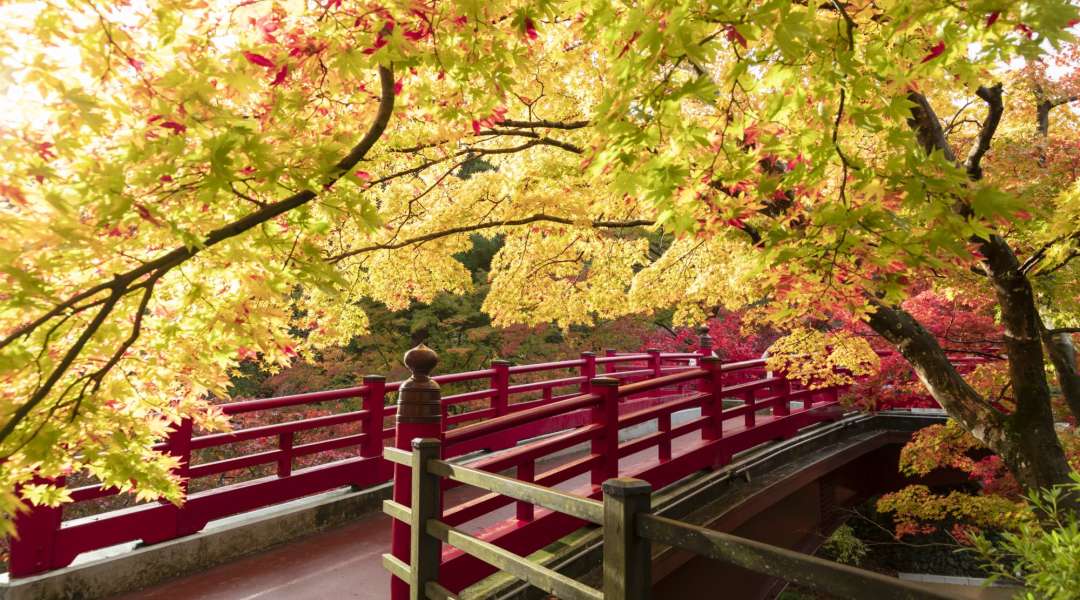
True to its local name, ‘Momiji-dani’ or ‘Maple Valley’, the renowned Yahiko Park transforms into one of the most picturesque spots in Niigata Prefecture come the autumn period. The highlight of the park is undoubtedly the central, vermilion Kangetsu-kyo Bridge whose elevation offers a gorgeous view of the vibrant, autumn-stained canopies foregrounding the nearby Mount Yahiko. Yahiko Park is only a 2-minute walk from the station and open 24/7, giving visitors plenty of time to roam its wide grounds and enjoy the autumn colours to the fullest, with illuminations after sunset for an otherworldly feel.

The park is not the only drawcard that Yahiko town has in its deck, as it is home to the ancient Yahiko Shrine whose origins can be traced back to 657 B.C. Hiking – or even hitching a ride on the ropeway or driving – up the aforementioned Mount Yahiko will also reward you with breath-taking views of the Sado Island and the Sea of Japan coastline.
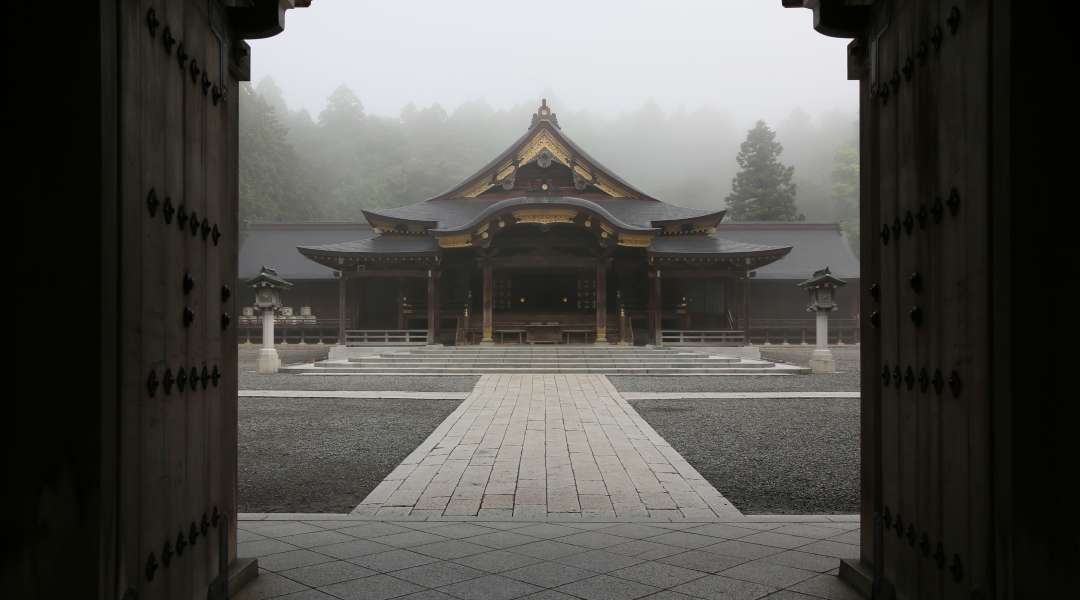
Lake Kawaguchi, Yamanashi

Mount Fuji from Lake Kawaguchi, Yamanashi
The most easily accessible of the five Fuji lakes from Tokyo, Lake Kawaguchi in Yamanashi prefecture is admittedly one of the more crowded destinations on our list. However, it is the best place to snap up that classic postcard-picture shot of Mount Fuji and the red maple leaves. With the crisp, cold air comes clearer expansive views of the iconic mountain being reflected on the lake’s crystal waters.
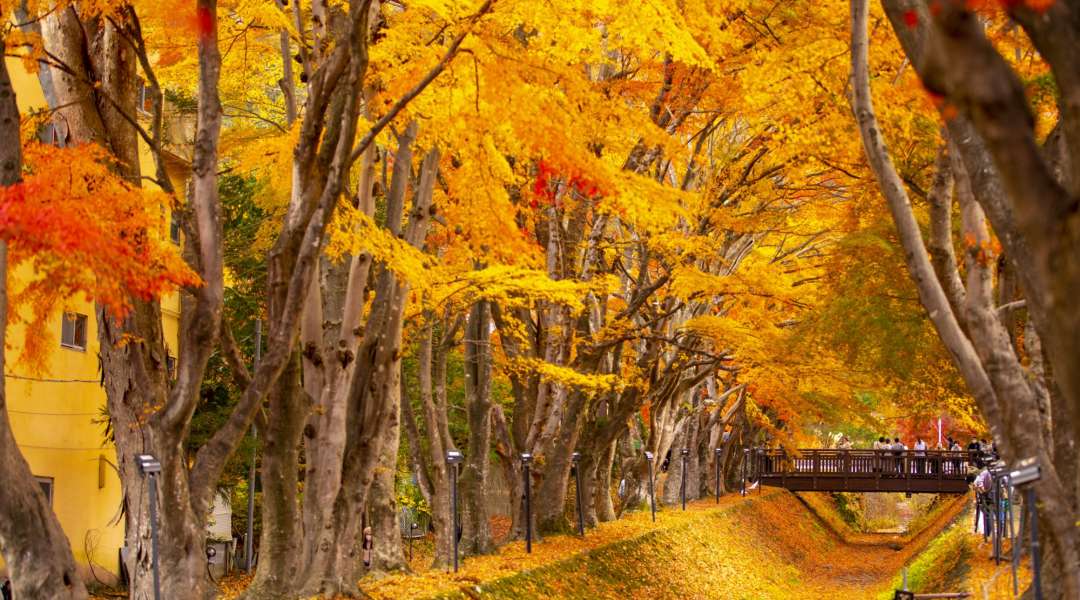
What's more, the lake’s northern shores are known to host the annual month-long Fujikawaguchiko ‘Momiji’ Autumn Leaves Festival in November. Japanese festival food stalls selling seasonal and local goodies line a maple tree-covered canal known as ‘Maple Corridor’, known for its striking fall colours. The festivities run into the night until 10pm with the corridor lit up in the dark to guide you through the glorious smells and sights.
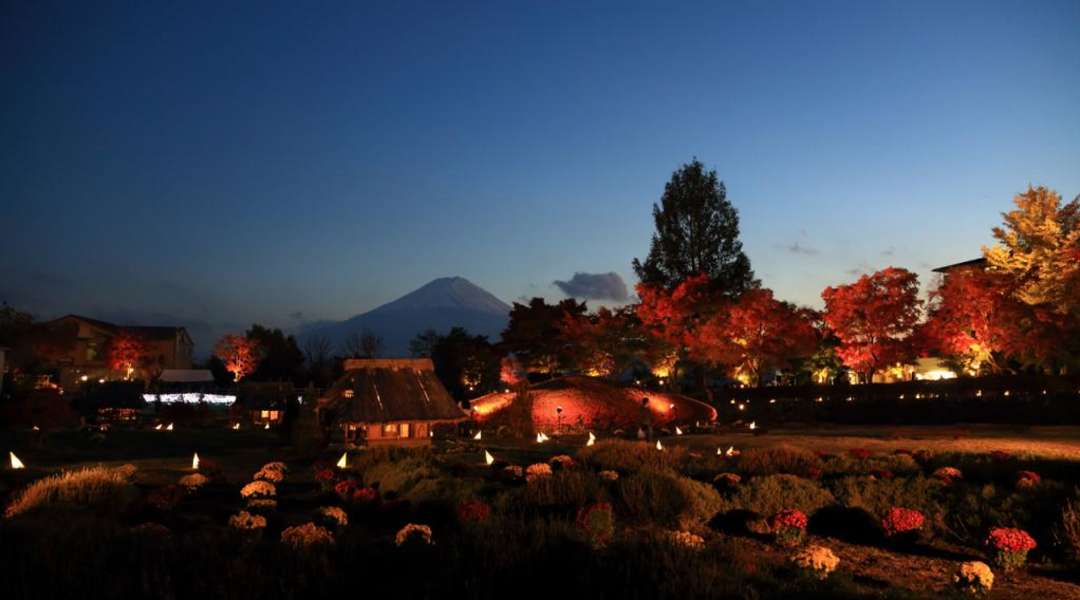 The Fujikawaguchiko ‘Momiji’ Autumn Leaves Festival's night-time illumination © Yamanashi Tourism Organization
The Fujikawaguchiko ‘Momiji’ Autumn Leaves Festival's night-time illumination © Yamanashi Tourism Organization
With direct buses and trains keeping the travel times under 2 hours, Lake Kawaguchi is the one-day autumn getaway from the capital that is worth the trip!
Kamikochi, Nagano

A resort in the Northern Japan Alps and part of the Chubu Sangaku National Park, Kamikochi’s mountain scenery and hikes are second to none. It is not the easiest place to reach in Nagano Prefecture since private cars are denied access, but the clear, celeste waters of the Azusa River in contrast with the autumn hues makes it worth going the extra mile on public transport. The river flows through the entire 15km length of the valley which, if you follow will lead you to the pristine Taisho Pond at the base of Mount Yakedake. This roughly 2-hour trek is punctuated with chance encounters with wildlife and alpine flora as well as spectacular views of the surrounding Hotaka mountain range.

In order to see the autumn colours at their best, we recommend visiting Kamikochi in October-November before the resort is closed until April for the winter.

Hida Takayama, Gifu
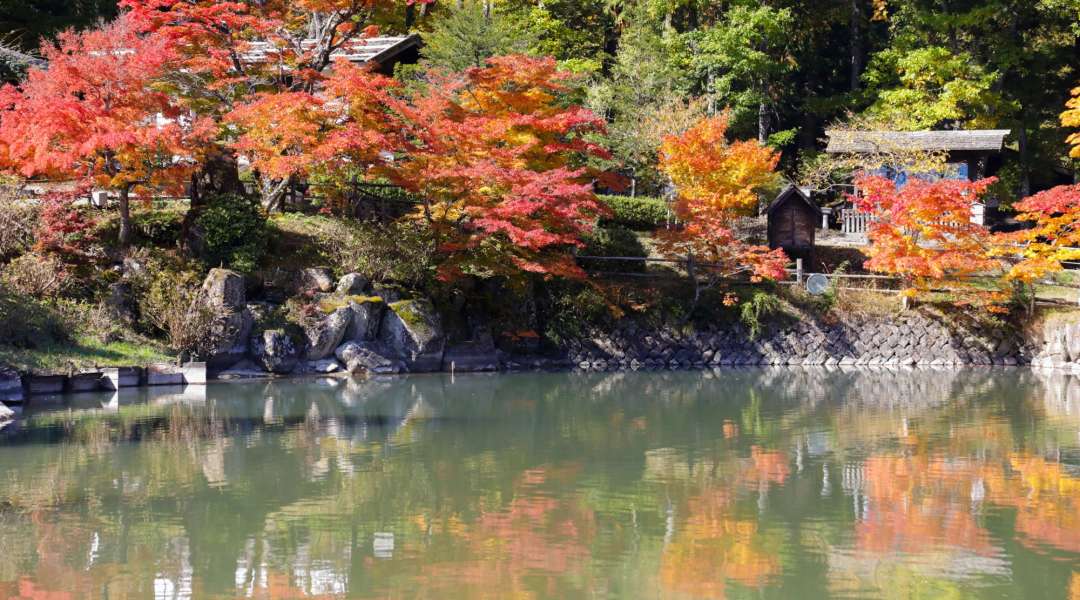
You may have heard of the UNESCO-listed thatched-roof village, Shirakawa-go, but Hida Takayama is another gem in Gifu prefecture's collection that deserves as much spotlight, especially during ‘koyo’ season with the Northern Japan Alps in its backyard. The city of Takayama and the surrounding area gained prominence during Japan’s feudal ages for its production of high-quality timber and distinctive carpentry. Just like its famous neighbour, the Hida Folk Village (Hida-no-Sato) within Takayama is typified by steep-angled farmhouses in the gassho-zukuri style. These have been turned into museums where visitors can learn about local craft and culture that reflect the Hida region, and are all the more charming peeking out from under the red and orange trees!

One can also witness the Takayama Autumn Festival in October where 12 ornate and brightly lit floats parade down the city's narrow, traditional streets. These majestic floats are hundreds-of-years-old and their decoration is reflective of Hida’s fine craftsmanship.
Korankei Gorge, Aichi
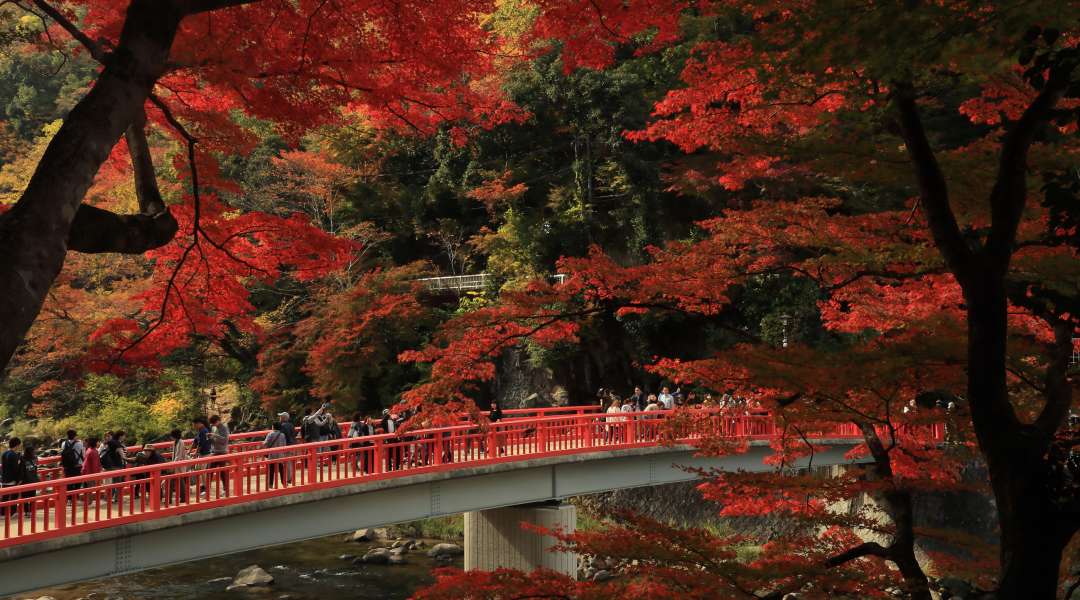
Well-known amongst the Chubu locals for autumn leaf viewing, Korankei Gorge in Aichi prefecture is renowned for the dramatic seasonal shift of its 4000 maple trees in November. The stunning ravine stretches from the Iimori Mountains to the Tomoe River where the colours are at their best, meaning there is plenty of ground and sights to cover and explore. One of those is the Sanshu Asuke Yashiki Village, an open air museum dedicated to showcasing Japanese lifestyle and handicrafts from a bygone era. If you book in advance, you can join craft workshops from 400 yen, and learn how to make washi paper postcards or straw sandals. Another unmissable checkpoint is the tranquil Kojakuji Temple where it is said that the maple trees of Korankei Gorge originated, from those few planted on the temple grounds by the head priest in the 17th century.
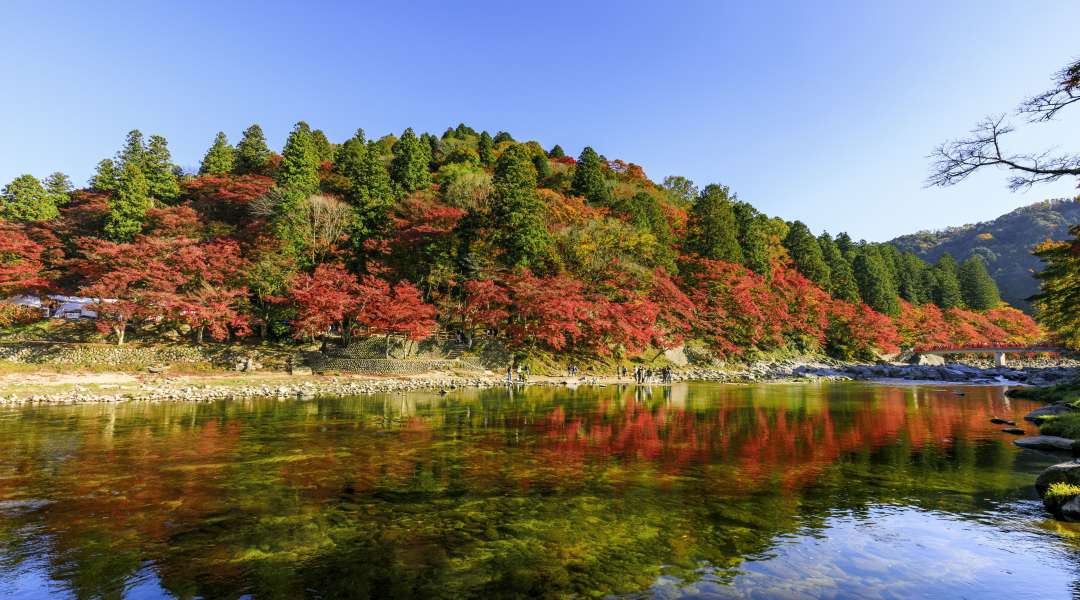
To top things off, there is also the annual Korankei Maple festival near Tomoehashi Bridge spanning the whole of November where traditional performances such as taiko drumming take place throughout the days. A Japanese autumn festival is, of course, not complete without evening illuminations to ramp up the ‘enchanted forest’ atmosphere.
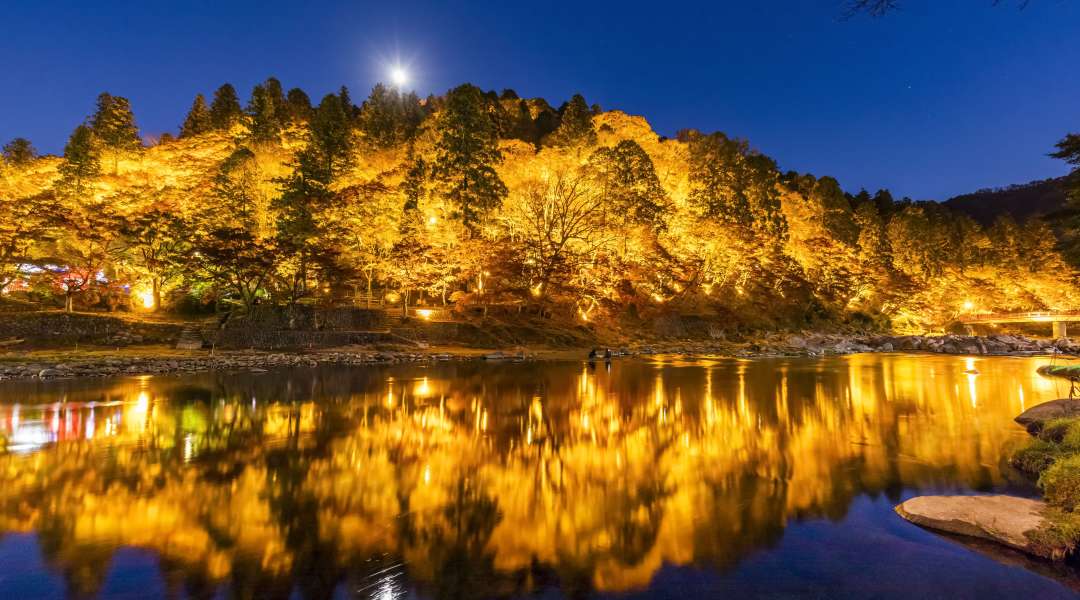
Sumatakyo Gorge, Shizuoka

If you feel like embarking on a more adrenaline-inducing koyo viewing, look no further than Sumatakyo Gorge deep in the Southern Japan Alps. It is one of Shizuoka prefecture’s best-kept secrets! Carved by the Sumata River, the steep sides of the ravine are connected to one another by a number of rickety wooden bridges that crossing will make you feel as though you are in an adventure movie. The most famous of these is the 90m-long Yume-no-Tsuribashi Bridge, meaning ‘Dream Suspension Bridge’, where no more than 11 people are allowed on at a time. Therefore, step through the planks if you dare and with caution! Those brave enough to take the leap are blessed with gorgeous views of the dazzlingly turquoise waters flowing under their feet, flanked by the fiery autumn foliage of mountains.
After a long day’s hike, there is nothing better than to soak in the warmth of hot spring waters, especially as the chill of winter starts to creep in. Sumatakyo Onsen village makes a relaxing end to a thrilling experience.
Kurobe Gorge, Toyama

Another natural wonder within the Northern Japan Alps is Kurobe Gorge in Toyama prefecture. This time, however, you can leave the hiking boots at home since the gorge’s main attraction takes the form of a sightseeing train known as the Kurobe Gorge Railway. Originally built to aid dam construction, the vintage railway had been repurposed into the best way one can take in Kurobe’s sweeping autumn scenery. Starting at Unazaki Onsen station, the train follows Kurobe River from above for 20km along largely untouched forested slopes before ending its 80-minute journey at Keyakidaira Station. If you are lucky to be seated at the cliff edge-side of the carriage – psst, we recommend the right! – be camera-ready to capture the beautiful and rugged mountain terrain set ablaze by the changing seasonal colours.

And if hiking is indeed your thing, then dotted along Kurobe Gorge are multiple walkable bridges such as the Okukane Pedestrian Bridge and the Shin-Yamabiko Bridge that break up the forest trails with the sheer panoramic openness of one of Japan’s deepest ravines.
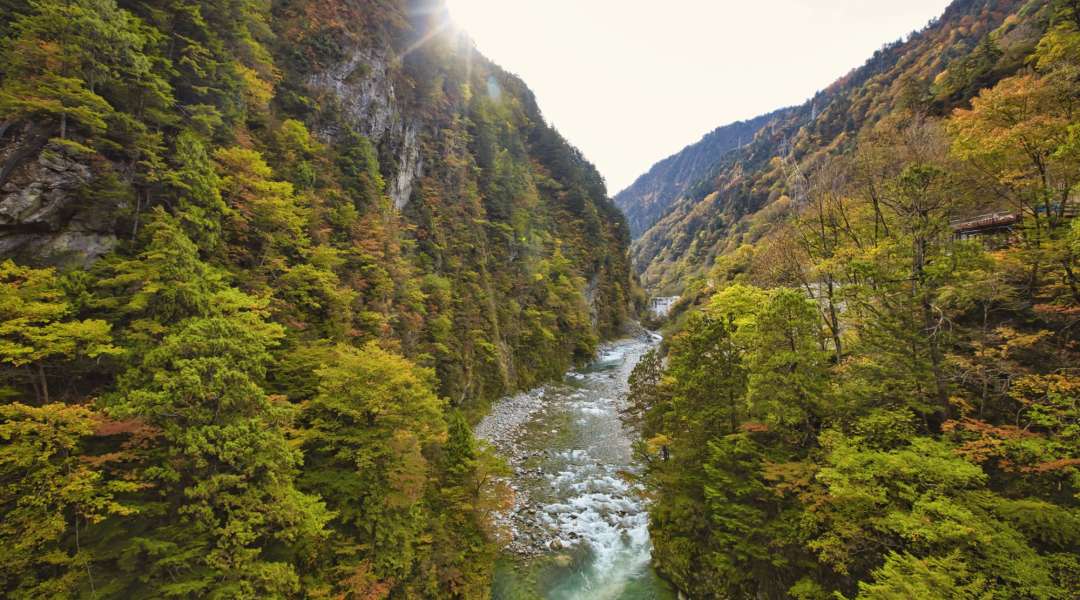 Kurobe River cuts through to form one of Japan's deepest gorges
Kurobe River cuts through to form one of Japan's deepest gorges
If spring is more your thing, then check out our list of hottest cherry blossom-viewing destinations of the Tohoku region here!
Want to be the first to learn and know more? Be sure to follow us on Facebook, Instagram, and Twitter for more updates!


























































